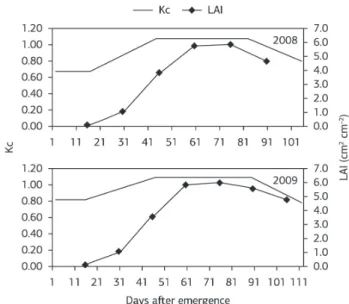Surface energy exchange and evapotranspiration From cotton crop under full irrigation conditions in the Rio Grande do Norte State, Brazilian Semi-Arid.
Texto
Imagem




Documentos relacionados
This mechanistic model simulates the energy fluxes (sensible, latent heat and net radiation) at three levels (atmosphere, canopy and soil) using only air temperature, relative
The values of latent heat flux (LE) and sensible heat flux (H) followed the distributions of rainfall, stored soil water and LAI (Figures 1D-F); in periods with low soil
to 0, 50, 100, 150 and 200% of the N doses recommended for the irrigated cotton crop in the region (Cavalcanti, 2008), and four quality types of irrigation water: freshwater, from
Th e energy balance partitioning and evapotranspiration over the muskmelon crop under irrigated conditions on the Brazilian Semi-Arid region was observed for during two
soil moisture, soil temperature, net radiation and heat fluxes (latent, sensible and ground heat fluxes) at land surface. Temperature and moisture of the surface 2.5 cm soil
The monthly averages of energy demand, incident radiation in the collector and heat supplied by the system in the solar-assisted crop drying are shown in Figure 7. The monthly
The objective of this study was to evaluate the errors associated to the application of the Bowen ratio-energy balance method for determining the sensible and latent heat fl uxes
METRIC is a residual model based on the energy bal- ance equation resolution by calculating the net radiation first, then the soil and the sensible heat fluxes, and then the latent